Phonological awareness Worksheets for Ages 3-9
11 filtered results
-
From - To
Discover our interactive phonological awareness worksheets designed specifically for children ages 3-9. These engaging activities focus on developing essential listening and sound recognition skills that form the foundation for reading and language development. With a variety of exercises, including rhyming, syllable segmentation, and sound manipulation, kids will enhance their phonemic awareness while having fun! Our worksheets cater to different learning levels, ensuring that every child can progress at their own pace. Ideal for both home and classroom use, our resources help foster a love for literacy in young learners. Download now and watch your child's reading skills take flight!
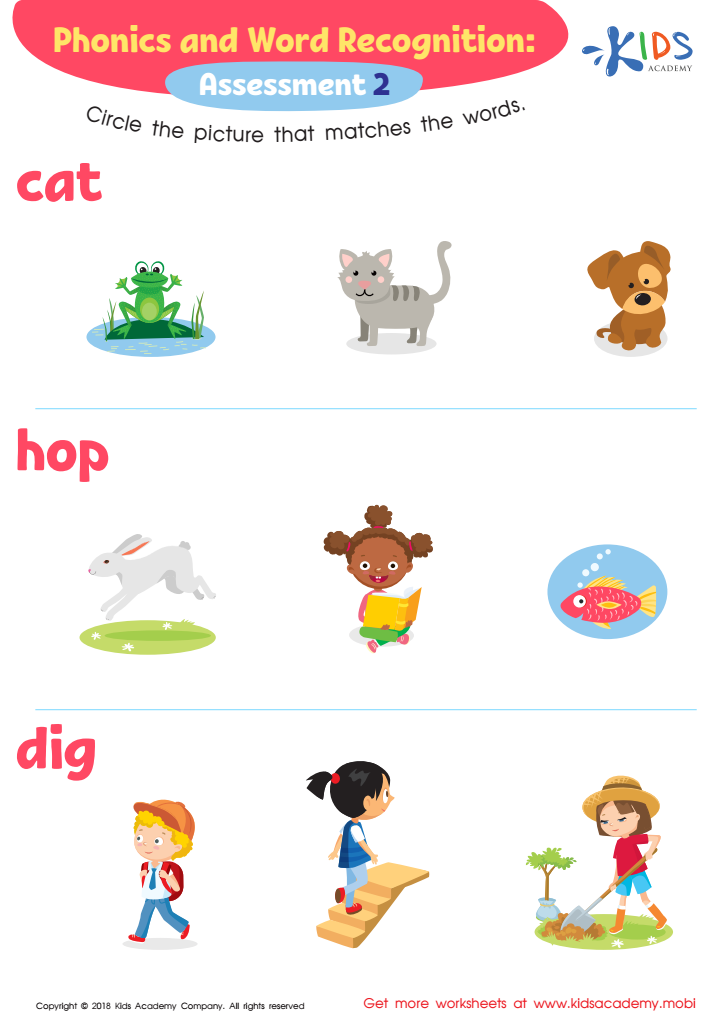

Phonological Awareness: Assessment 2 ELA Worksheet
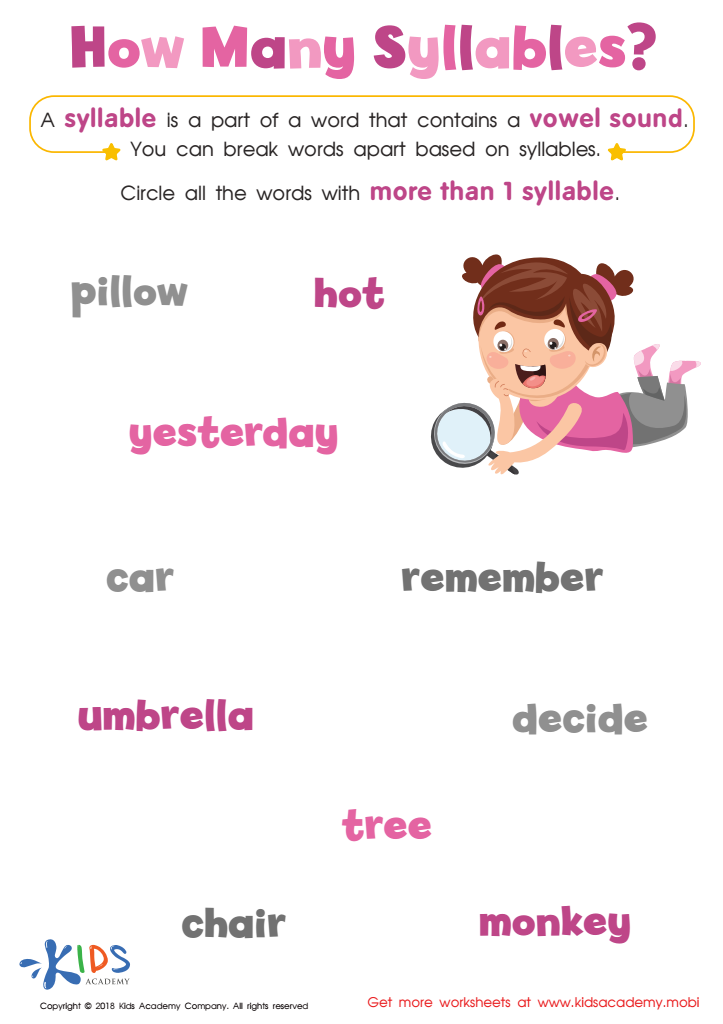

Reading: How Many Syllables Worksheet


Phonological Awareness: Assessment 2 Worksheet
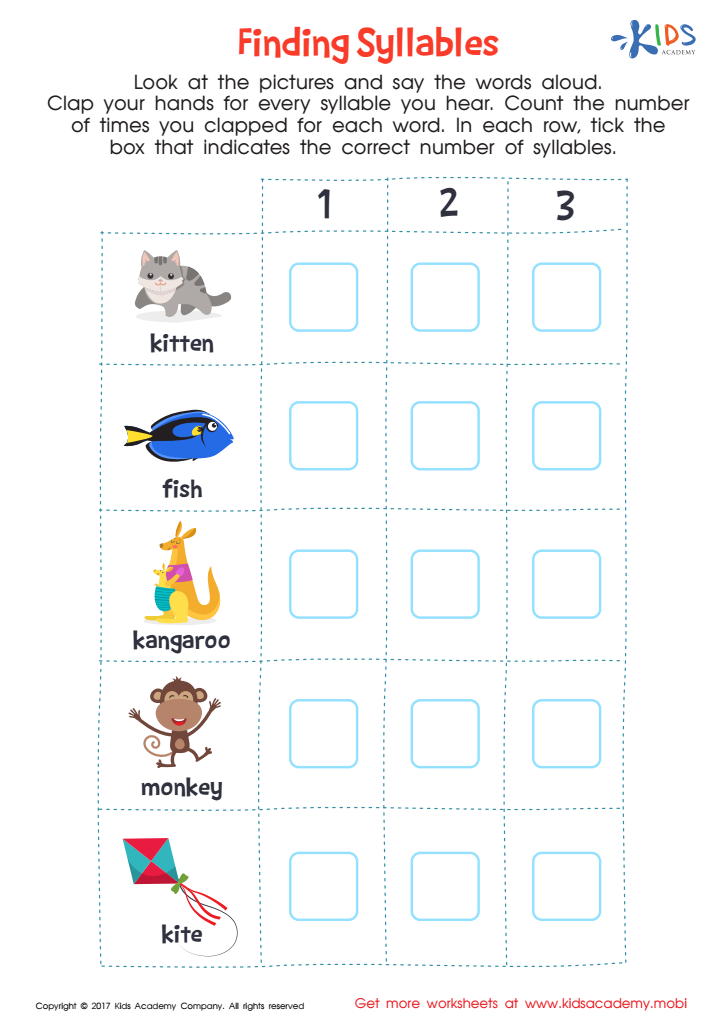

Finding Syllables Word Structure Worksheet
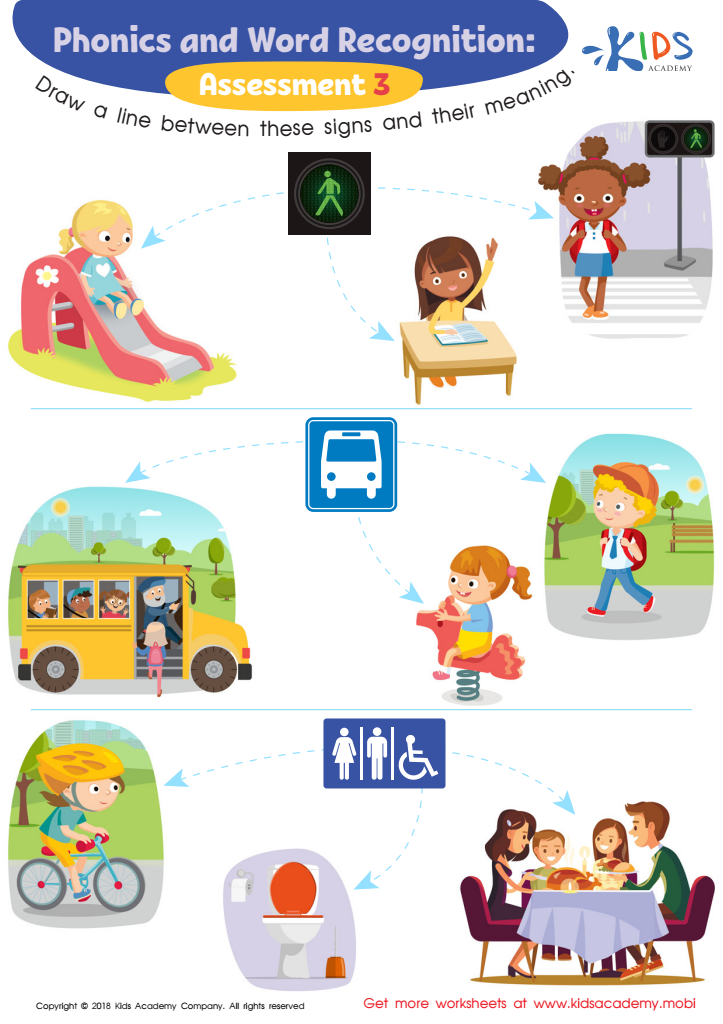

Phonological Awareness: Assessment 3 ELA Worksheet


How Many Syllables? Worksheet
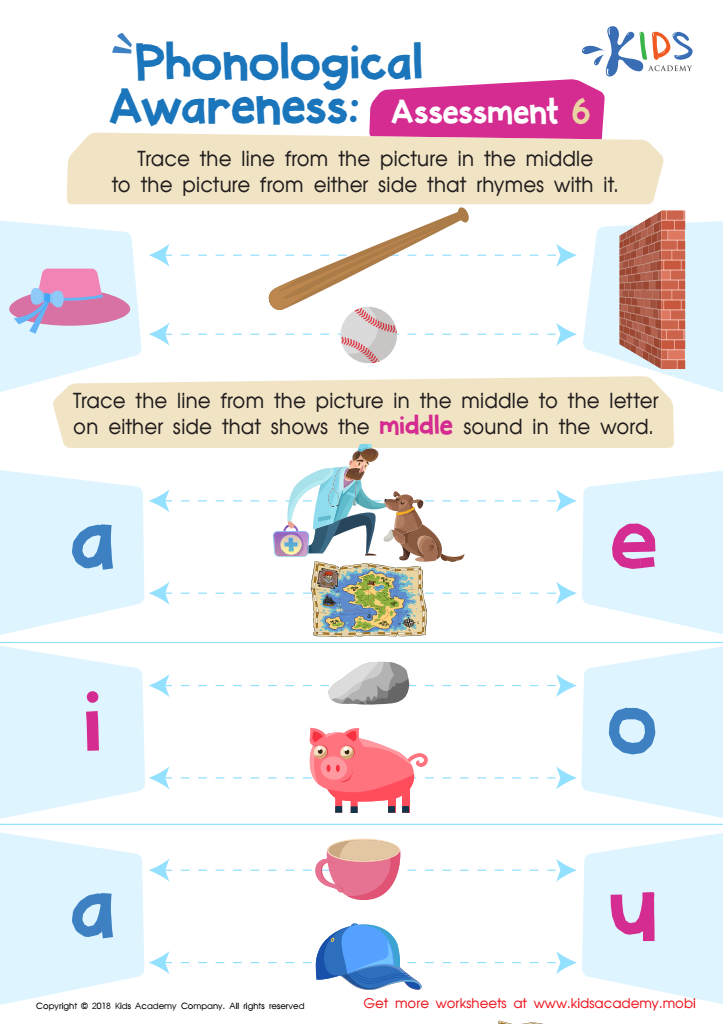

Phonological Awareness: Assessment 6 Worksheet
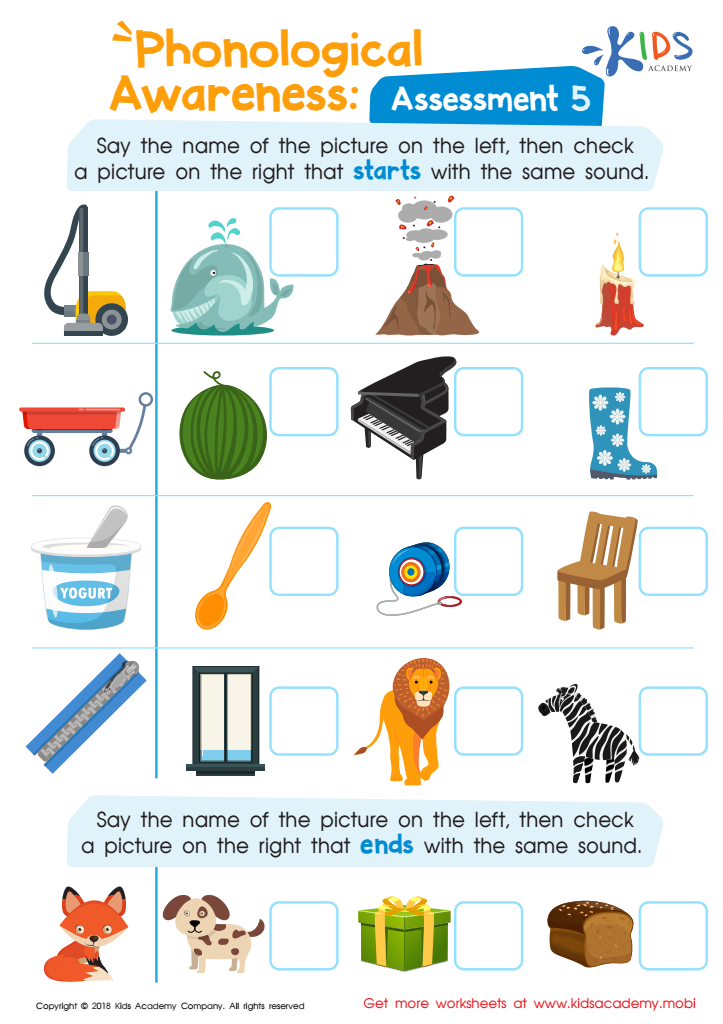

Phonological Awareness: Assessment 5 Worksheet
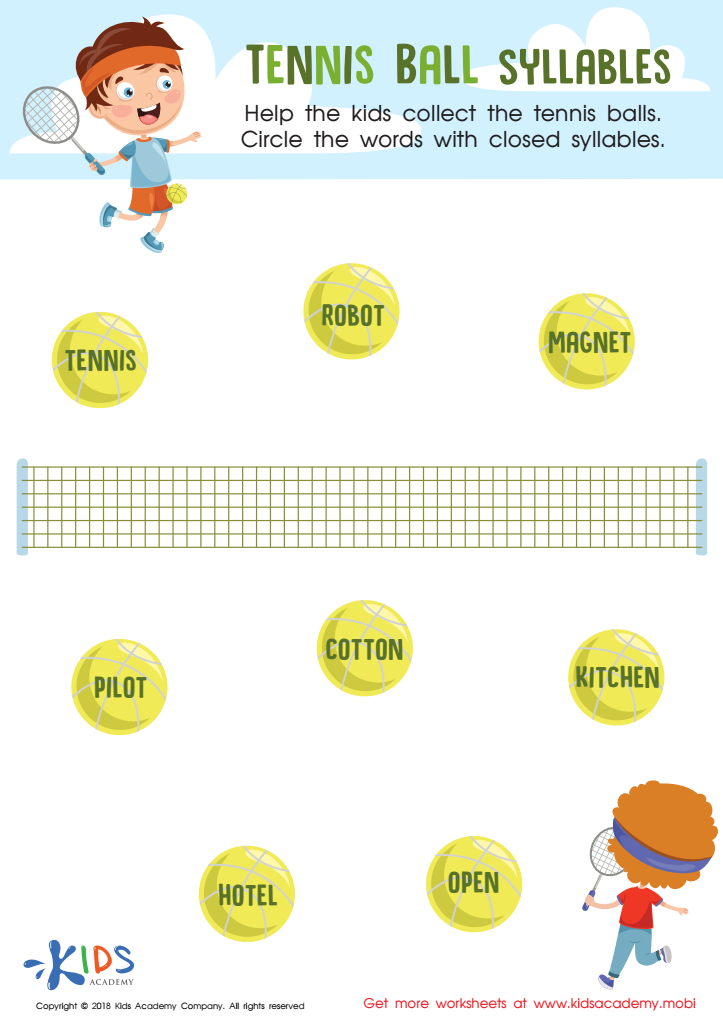

Tennis Ball Syllables Worksheet
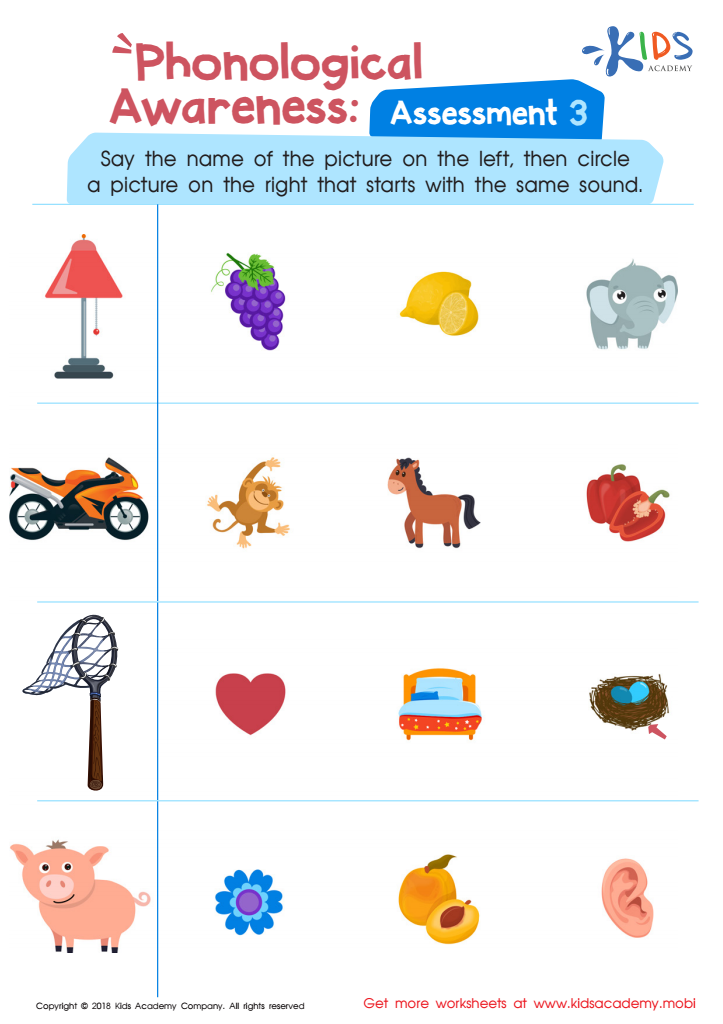

Phonological Awareness: Assessment 3 Worksheet
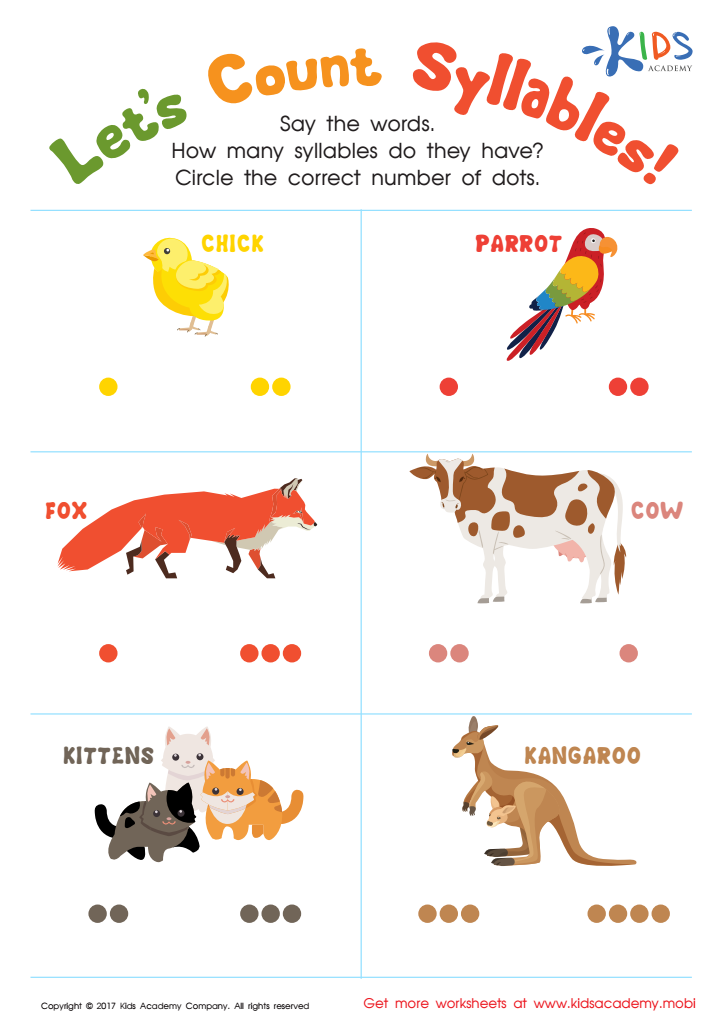

Lets Count Syllables Worksheet
Phonological awareness is a critical skill for early reading development, making it essential for parents and teachers to prioritize it for children ages 3-9. This skill involves recognizing and manipulating the sound structures of language, including phonemes, syllables, and rhymes. By developing phonological awareness, children gain the fundamental ability to hear, identify, and manipulate individual sounds in words, which is crucial for them to decode written language successfully.
Research has consistently shown that children with strong phonological awareness typically become better readers. This translates into greater success in school and improved confidence in their literacy skills. When parents and teachers foster these abilities through engaging activities, such as rhyming games, sound matching, and storytelling, they create a solid foundation for reading and writing.
Moreover, phonological awareness is linked to broader cognitive development, such as vocabulary expansion and improved listening skills. This foundation also contributes to students' overall academic achievement and lifelong love for learning. As literacy is foundational for many educational and life opportunities, understanding the importance of phonological awareness can help parents and teachers support children's literacy journey effectively. Investing time and resources into this area can highlight its long-term benefits for children’s educational success.

 Assign to My Students
Assign to My Students




















